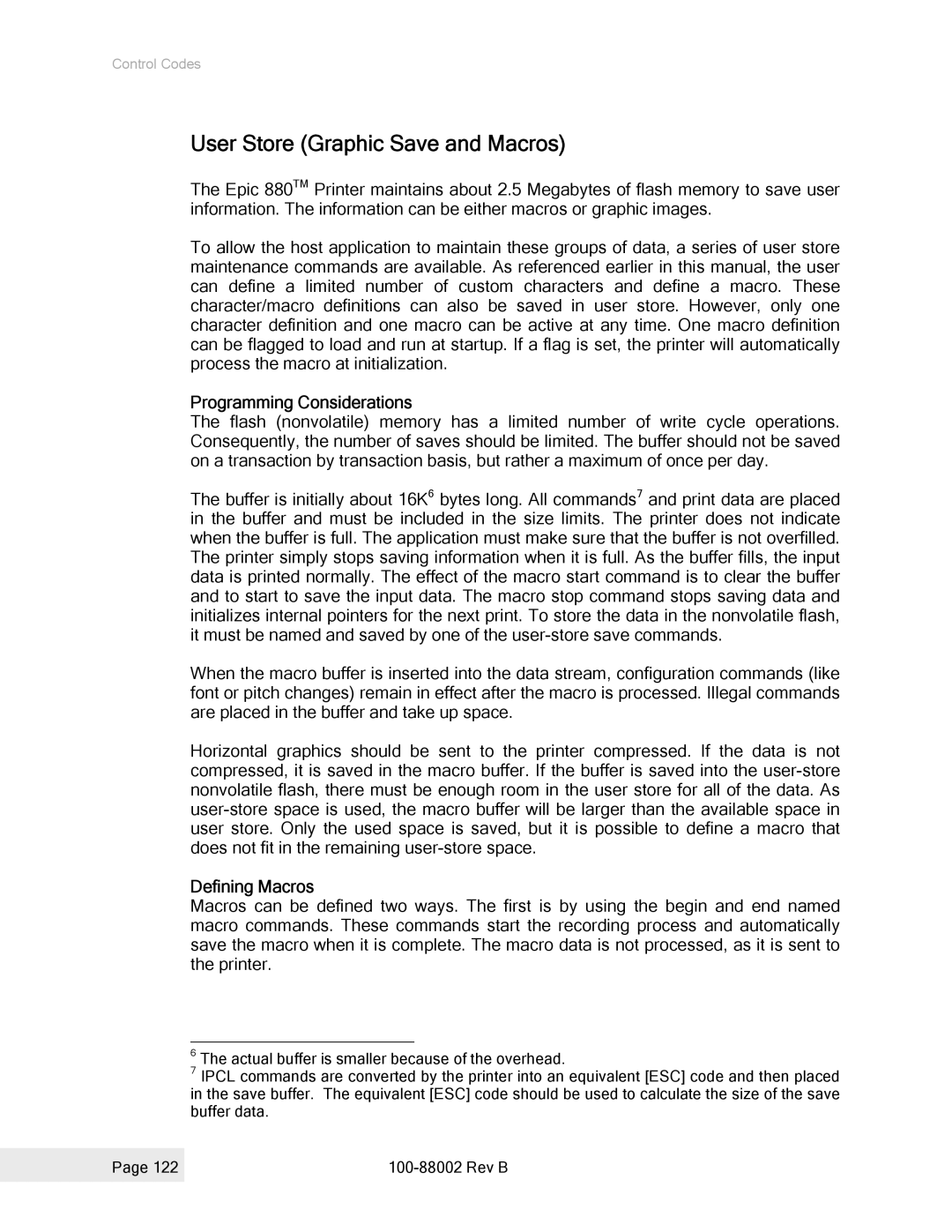Control Codes
User Store (Graphic Save and Macros)
The Epic 880TM Printer maintains about 2.5 Megabytes of flash memory to save user information. The information can be either macros or graphic images.
To allow the host application to maintain these groups of data, a series of user store maintenance commands are available. As referenced earlier in this manual, the user can define a limited number of custom characters and define a macro. These character/macro definitions can also be saved in user store. However, only one character definition and one macro can be active at any time. One macro definition can be flagged to load and run at startup. If a flag is set, the printer will automatically process the macro at initialization.
Programming Considerations
The flash (nonvolatile) memory has a limited number of write cycle operations. Consequently, the number of saves should be limited. The buffer should not be saved on a transaction by transaction basis, but rather a maximum of once per day.
The buffer is initially about 16K6 bytes long. All commands7 and print data are placed in the buffer and must be included in the size limits. The printer does not indicate when the buffer is full. The application must make sure that the buffer is not overfilled. The printer simply stops saving information when it is full. As the buffer fills, the input data is printed normally. The effect of the macro start command is to clear the buffer and to start to save the input data. The macro stop command stops saving data and initializes internal pointers for the next print. To store the data in the nonvolatile flash, it must be named and saved by one of the
When the macro buffer is inserted into the data stream, configuration commands (like font or pitch changes) remain in effect after the macro is processed. Illegal commands are placed in the buffer and take up space.
Horizontal graphics should be sent to the printer compressed. If the data is not compressed, it is saved in the macro buffer. If the buffer is saved into the
Defining Macros
Macros can be defined two ways. The first is by using the begin and end named macro commands. These commands start the recording process and automatically save the macro when it is complete. The macro data is not processed, as it is sent to the printer.
6The actual buffer is smaller because of the overhead.
7IPCL commands are converted by the printer into an equivalent [ESC] code and then placed in the save buffer. The equivalent [ESC] code should be used to calculate the size of the save buffer data.
Page 122 |
|
|
|
